Fake ID safety
Introduction: The Rise of Digital Privacy and the Demand for Fake IDs
In the digital age, identity verification has become a cornerstone of modern society. Whether you're signing up for social media, booking a flight, or even buying a bottle of alcohol, verifying your identity is an essential part of your everyday life. However, as the demand for increased security and privacy grows, so does the desire for "alternative" ways to manage identity—leading some individuals to seek fake IDs.
A fake ID is typically a fraudulent document designed to resemble an official form of identification, such as a driver's license, passport, or other government-issued ID. The use of fake IDs has long been associated with underage drinking, fraud, and other illegal activities. But, in recent years, the discussion surrounding fake IDs has expanded, particularly with the rise of digital identity management systems.
Today, fake IDs are no longer limited to physical, counterfeit versions of traditional IDs. A new form has emerged: digital fake IDs. These are virtual representations of identification that can be used in online transactions, bypassing physical security measures. In this article, we will explore how these digital IDs work, their safety implications, ethical concerns, and how they fit into the broader conversation about digital identity management.
Section 1: Understanding Fake ID Safety
1.1 What Makes a Fake ID "Safe"?
When considering fake ID safety, it's important to distinguish between safety from both legal consequences and from potential security breaches. While the illegal use of fake IDs (such as for fraud, underage drinking, or accessing restricted areas) remains a significant concern, digital fake IDs introduce a new level of complexity.
Physical Fake IDs:
- Risk of Detection: Fake IDs are typically identified through visual inspection, scanning, or specialized security measures like UV light or holograms. The safer a fake ID is, the harder it is for authorities or business owners to detect it.
- Quality of Materials: Fake IDs that closely mimic the look and feel of authentic IDs are often considered safer. These IDs may feature high-quality printing, real-feel materials, and advanced security features that mimic official documents.
Digital Fake IDs:
- Encryption and Authentication: For digital fake IDs, encryption plays a vital role in ensuring data integrity and preventing unauthorized access. A safe digital ID will be encrypted to prevent tampering or theft.
- Privacy Protection: Many digital fake IDs are designed with user privacy in mind. They allow individuals to protect their real identities online by masking or altering certain personal details.
While physical fake IDs are often seen as tools for fraud and illegal behavior, digital fake IDs are marketed as privacy-enhancing solutions that protect users from identity theft, surveillance, and data breaches. However, as with all digital tools, these solutions are not foolproof, and their safety depends on the technology behind them and the precautions users take.
1.2 Legal Considerations and Compliance
Legality of Fake IDs: The legal status of fake IDs varies by jurisdiction. In many countries, the possession or use of a fake ID is illegal, with serious consequences for both the creators and users of counterfeit IDs. However, some digital fake IDs may operate in a gray area, where they don’t necessarily break any laws unless they are used for illegal activities.
Privacy vs. Legality: Digital fake IDs blur the lines between privacy and legality. While a person’s right to protect their identity online is an established privacy concern, using a fake ID for purposes like evading law enforcement or bypassing regulations (e.g., age restrictions, financial transactions) can still result in legal repercussions.
Section 2: Product Features and Technologies Behind Fake IDs
2.1 Physical Fake IDs: From Creation to Use
To understand the safety of fake IDs, it's essential to look at the technology and processes involved in their creation.
Advanced Printing Techniques:
- Modern fake IDs often rely on high-resolution printing, holographic overlays, and special inks that mimic the security features of government-issued identification cards.
- These techniques can include UV-sensitive features, microtext, and tamper-evident holograms, making it more difficult to detect counterfeits.
Biometric Features:
- Some counterfeit IDs are equipped with biometric data, such as fingerprint recognition, facial recognition, or iris scanning capabilities, making it more challenging for authorities to distinguish them from authentic IDs.
2.2 Digital Fake IDs: The New Frontier
As technology evolves, so too do the ways in which fake IDs are used. Digital IDs represent the next frontier in identity verification.
Blockchain Technology:
- Blockchain is becoming a powerful tool in digital ID management. Using a decentralized ledger, blockchain can ensure that fake IDs cannot be easily replicated or altered without detection. For digital fake IDs, this means greater security and a reduced risk of fraud.
Biometric Authentication:
- Many digital fake IDs use biometric authentication systems like facial recognition, fingerprint scanning, or voice recognition to validate a person’s identity before they can use the digital ID. This additional layer of protection ensures that even if a fake ID is compromised, the real person is still protected.
Cryptographic Security:
- Cryptographic techniques are used to encrypt personal data stored on digital IDs. This ensures that the user's private information is not accessible by unauthorized parties, providing a level of security that goes beyond traditional paper IDs.
2.3 Real-World Applications of Fake IDs
While fake IDs are most commonly associated with illegal activities, there are legal applications in specific industries where identity verification can be critical, but the individual wishes to remain anonymous.
Privacy Protection:
- People who are concerned about their privacy—such as whistleblowers, activists, or victims of domestic abuse—may use fake IDs to avoid surveillance or potential harm.
- Digital fake IDs can provide a layer of anonymity while still allowing individuals to engage in online activities without revealing their true identities.
Digital Identity and Access Control:
- Digital fake IDs are being adopted by tech-savvy individuals who want to protect their digital footprints. These IDs may be used to access websites or services that require identity verification but don't require the user to reveal sensitive personal information.
Section 3: Market Analysis of Fake IDs
3.1 Market Demand: Why People Use Fake IDs
The demand for fake IDs has evolved significantly over the years. While the classic reasons for using a fake ID (underage drinking, entering restricted areas) still persist, there are emerging demands in niche markets.
- Youth and College Students: Many young adults use fake IDs to circumvent age restrictions on alcohol, tobacco, or entry into clubs and bars.
- Online Privacy Advocates: As online privacy concerns grow, more individuals seek ways to maintain their anonymity in the digital world.
- People in High-Risk Professions: Activists, journalists, and others in high-risk professions might use fake IDs for safety reasons, especially when working in oppressive regimes or in dangerous areas.
3.2 The Digital Transition: Fake IDs in the Digital World
With the increasing reliance on online services and e-commerce, there’s a rising trend of individuals seeking digital fake IDs. These digital solutions are designed to enhance security and protect privacy, catering to specific needs such as:
- Virtual Goods and Services: Digital fake IDs are used in online gaming and other virtual platforms where users need to confirm age or identity.
- Blockchain and NFTs: In the world of blockchain technology and NFTs, digital identity solutions are becoming more widespread. Fake digital IDs are used by individuals who want to obscure their personal data in the pursuit of privacy.
3.3 Competition and Market Players
Several companies and underground markets provide fake ID services. While some operate openly, others work in secrecy, offering products that are marketed for "novelty" or "collectible" purposes. These markets create significant challenges for law enforcement and businesses that rely on secure identity verification systems.
- Counterfeit Services: Many counterfeit services focus on providing high-quality physical fake IDs that are nearly indistinguishable from the real thing.
- Digital ID Providers: As blockchain and digital verification technologies become more advanced, legitimate companies offering privacy-focused digital IDs are also emerging.
Section 4: Ethical Considerations and Risks of Fake IDs
4.1 Ethical Concerns
While fake IDs may provide certain privacy benefits, they are often associated with illegal activities. The ethical implications depend on how and why they are used. Using a fake ID to bypass the law or deceive others is not only illegal but can also harm individuals, businesses, and society as a whole. For example:
- Fraudulent Use: Fake IDs can be used to commit fraud, such as identity theft, financial crimes, or even in illegal immigration scenarios.
- Undermining Trust: Fake IDs undermine trust in digital and physical identity systems, which are crucial for maintaining security in society.
4.2 Mitigating Risks
To mitigate the risks associated with fake IDs, users should consider:
- Only using legitimate privacy-protection services that comply with regulations.
- Being aware of the legal implications of using fake IDs in their jurisdiction.
Conclusion: The Future of Fake IDs in an Evolving Digital World
As digital technologies continue to evolve, the landscape of fake IDs is shifting. What was once a tool primarily for illegal activities is now being reimagined as a legitimate privacy tool for individuals seeking to protect their online identity. However, this evolution brings new challenges in terms of security, ethical considerations, and legal ramifications.
While the safety and security of fake IDs—both physical and digital—will continue to improve, individuals must carefully weigh the risks and benefits before considering their use. By understanding the technologies behind fake IDs and the broader ethical and legal context, users can make informed decisions about how to navigate this complex and often controversial issue.
 fake ID safety
fake ID safety
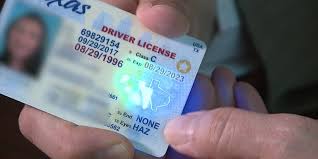 High-Quality Custom Fake ID Il
High-Quality Custom Fake ID Il
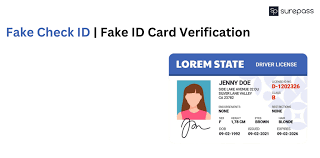 Arizona ID features
Arizona ID features
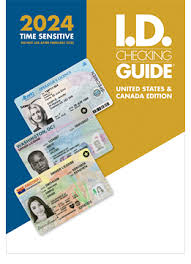 best Arizona fake ID
best Arizona fake ID
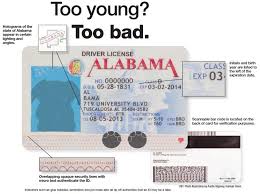 Illinois Driver’s License Opti
Illinois Driver’s License Opti
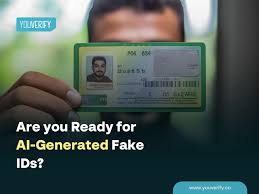 fake ID buying guide
fake ID buying guide
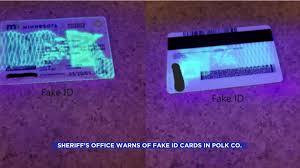 scannable fake ID
scannable fake ID
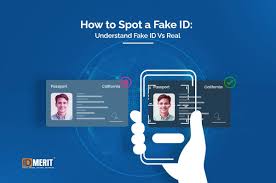 Arizona novelty ID
Arizona novelty ID
